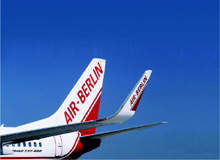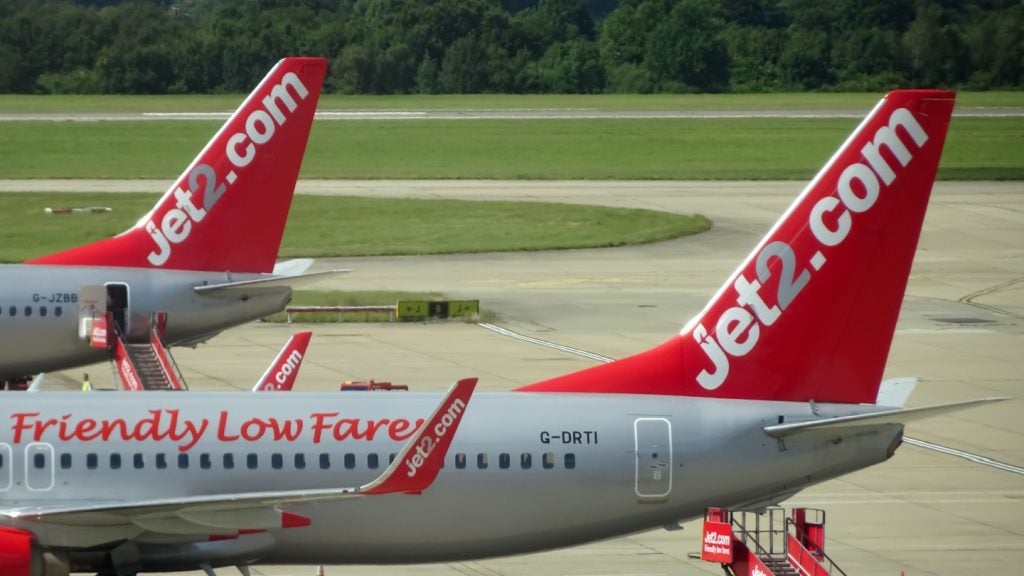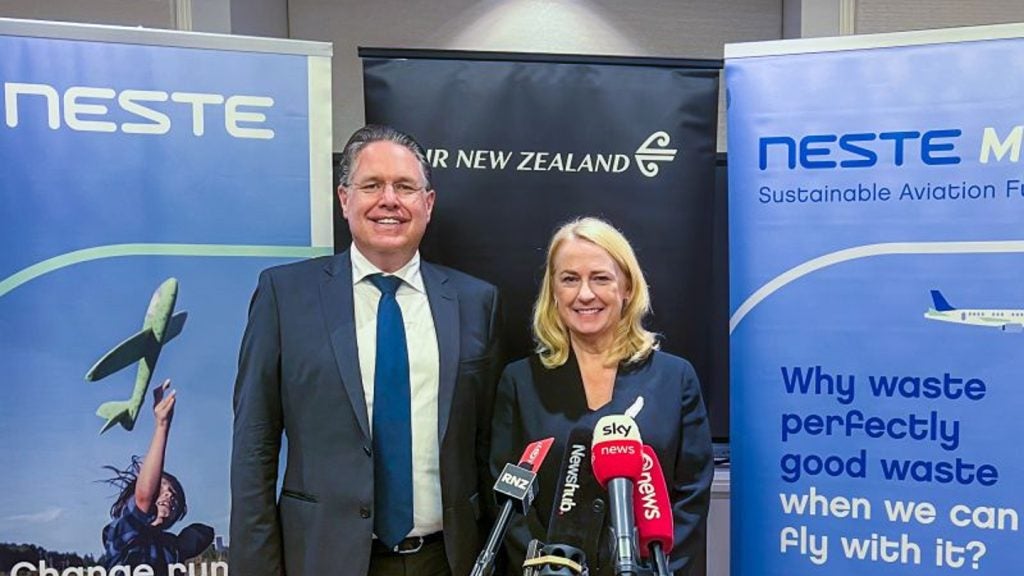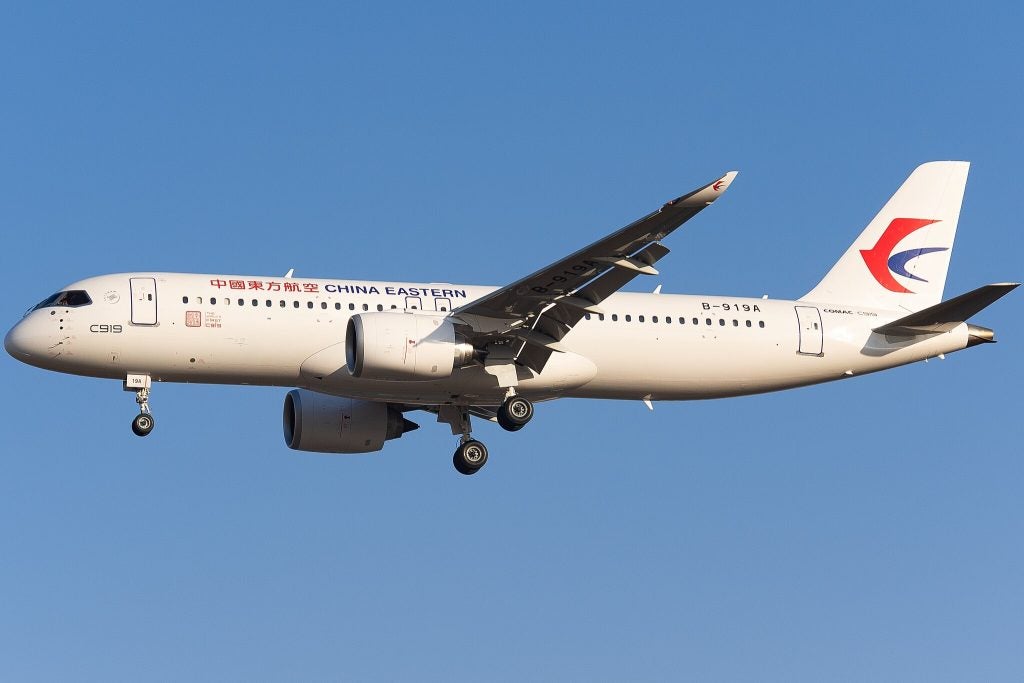
Air Berlin’s acquisition of charter carrier LTU will transform its route strategy by adding long haul routes and boosting its access to crowded Düsseldorf airport where LTU bases its operations. The €140m deal with the assumption of up to a further €200m of debt from loss-making LTU, is, however, currently under investigation by the German cartel office on competition grounds.
At the least Air Berlin seems likely to have to shed some local slots. CEO Joachim Hunold may consider this a small price to pay for creating Europe’s third largest airline, second only in Germany to Lufthansa, and whose 120 aircraft carried 22.1 million passengers in 2006.
Had the deal not been taken up by the cartel office, Air Berlin was planning to have integrated LTU’s flight schedule fully with its own by November 2007, though LTU will only retain its separate identity for its long haul routes.
Airline analysts point out that among the big items of added value in the deal is the provision of widespread feeders for LTU’s charter services. It was the lack of these that had caused the airline to struggle in a market already beginning to move away from the charter to the low-cost model.
Air Berlin’s core operations at present remain short and medium haul routes linking 20 German airports to some 55 destinations, nearly all within Europe. The routes are both tourist and scheduled and include primary and secondary airports, though Air Berlin’s preference is clearly for primary. UK and Ireland country manager Titus Johnson explains: “In Berlin, we use Berlin Tegel, which is the most centrally located of the city’s airports, and in Belfast we fly to Belfast City, which is just two or three miles from the city centre. In the UK we go to Stansted, Manchester and Glasgow International instead of Glasgow Prestwick.”
See Also:
NEW LONG HAUL SERVICES
How well do you really know your competitors?
Access the most comprehensive Company Profiles on the market, powered by GlobalData. Save hours of research. Gain competitive edge.

Thank you!
Your download email will arrive shortly
Not ready to buy yet? Download a free sample
We are confident about the unique quality of our Company Profiles. However, we want you to make the most beneficial decision for your business, so we offer a free sample that you can download by submitting the below form
By GlobalDataThe integration of LTU will give Air Berlin 23 long haul routes together with its fleet of 11 A330s. The majority of new routes are tourist, with a focus on the Caribbean, Africa (Kenya, Mauritius, Namibia, South Africa) and Southeast Asia (Cambodia, Sri Lanka and Thailand). However, included in LTU’s routes are also business destinations: New York, Los Angeles, Toronto and Vancouver. LTU also brought Air Berlin 15 new European destinations, particularly in Turkey, the Greek islands and the former Yugoslavia.
LTU also brings Air Berlin extra presence in Düsseldorf. “The catchment area of Düsseldorf airport is the most important market in Germany,” says Joachim Hunold, “and the second most important in Europe, behind London. We would not have been able to grow this airport organically, due the limitation of departure slots.”
Air Berlin’s March 2007 announcement of its LTU takeover, which it financed through an IPO of 72% of the company, came hard on the heels of the autumn acquisition of Munich-based dba, which brought valuable slots in both Munich and Düsseldorf. dba’s vendors, investment group Intro, also owned LTU.
ROUTE PLANNING STRATEGIES
With the LTU acquisition, Air Berlin abandoned a code-sharing agreement with TUI intending to switch to an intensive code-sharing deal with TUI’s rival, Thomas Cook-owned leisure carrier Condor. Condor has 43 European routes and 40 intercontinental, with some overlap with LTU.
According to Air Berlin, the new code-share is expected to lead to cost savings from joint flight schedules and ticket sales, especially on the long haul routes. The airline also expects higher code share revenue than it enjoyed with TUI, whose TUIfly.com now becomes its major German low-cost market competitor.
“When Air Berlin is looking at new routes,” explains Johnson, “we need to find a market which we believe is overpriced or underserved. The elements that make up the route density are of course the airport, its location, its attractive pricing, the transport conditions for the airport, the connections and infrastructure. We also look at the economy, the level of business activity and GDP in the region. These are all very important factors for evaluating a route.”
Route planning for Air Berlin presents particular challenges because of the carrier’s unique approach to the low cost market. Despite low ticket prices, Air Berlin offers refundable, transferable tickets, actively courts business passengers and their companies and runs a frequent flyer programme.
Hunold explained recently: “We never wanted to be a no-frills carrier and never wanted to be a flag carrier. I think where we position ourselves is as a hybrid – an in-between.”
The airline’s mix of charter and scheduled also presents challenges to the route planners, because of the steady shift from charter passengers, within the old package holiday model, to scheduled travel on holidays where the flight cost is not necessarily part of the package. Thus Palma in Majorca, Air Berlin’s very first route when it was established in as a charter destination in 1979, has become the prime route network destination and a mini-hub for internal Spanish routes. The carrier’s Majorca Shuttle, which runs from a dozen German airports means that its operates no less than 360 Palma flights weekly during the summer season.
STRONG INDUSTRY PRESENCE
Commerzbank researchers remark that Air Berlin has been careful to build up strong distribution channels, with firm presence on the internet, as well as calls centres and airport sales. Unusually for low-cost carriers, Air Berlin also links in to the Amadeus computer reservation system.
Commerzbank also notes that Air Berlin was able to arrange very favourable conditions for its purchase agreement with Airbus for the delivery of 60 aircraft of the A320 family, as well as with Boeing for 60 737-800 NGs and 25 737-700s, in an order this year which stunned the market.
One industry analyst commented: “Air Berlin should have some flexibility on the financial impact of its aircraft deliveries. The new aircraft could either be used to replace older or leased aircraft or for additional growth. Against the current market environment for new aircraft, which is characterised by high demand, Air Berlin could easily make sale-and-lease-back arrangements to improve its cashflow generation. Air Berlin was able to arrange very favourable conditions for its purchase agreements with Airbus and Boeing.”
The expectation is that optimized operational planning will produce a considerable boost in aircraft utilisation and thus Air Berlin’s pricing power. In particular by 2008 the carrier should be able to generate considerable feeder traffic for long haul routes.
In addition, by getting rid of route overlaps within the European network, coordinated flight plans will free up aircraft capacity and airport slots for new routes or greater frequency to existing destinations. It also seems probable that Air Berlin will use some of LTU’s wide-bodied long haul planes on busy medium haul routes, particularly Palma, which could reduce unit cost per seat by up to 15%.
Now the airline must sit and wait, hoping the German regulators do not clip its
wings.







